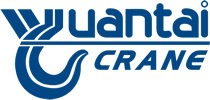
Technical standards for cranes
Cranes should currently be an indispensable production equipment in social production activities. They have been widely used in various fields of economic construction. Cranes are also dangerous during use. Therefore, it is more important to reduce and eliminate crane safety accidents.
1. Crane bridge maintenance
(1) Inspection of two diagonals in the horizontal direction: allowable deviation of box beam is 5mm; allowable deviation of pestle beam is 10mm
(2) Inspection of two diagonals in the vertical direction: allowable deviation 10mm
(3) The deviation of the distance between the trolley track and the longitudinal center of the bridge frame: the allowable deviation should be less than 3mm
(4) Box girder: The metal structure should not have cracks and weld cracks; the amount of metal corrosion should not exceed 10% of the original thickness, the painting should be intact, and it should be painted after repair
2. Maintenance of the geometry of the main beam of the crane
(1) Inspection of the camber of the main beam: the camber of the middle span is L/1000, and the allowable deviation is 20% of the camber
(2) Inspection of the lower deflection of the main girder: the elastic lower deflection of the full-load mid-span is ≤L/700, and the no-load mid-span deflection shall not exceed 0.6/1000L. Exceeding the specified value should be repaired and reinforced
(3) Horizontal side bend inspection: the horizontal side of the mid-span should not be greater than L/2000
(4) Wave-shaped deformation of the web: the wave crest in the compression zone should not be greater than 0.7δ, and the wave crest in the tension zone should not be greater than 1.2δ, δ-web thickness
3. Maintenance of crane truss members: the curvature of the main force-bearing members between the truss nodes. The bending of the main force-bearing members (compression bars) of the truss should not exceed 1/1000, but the maximum should not be greater than 2mm.


